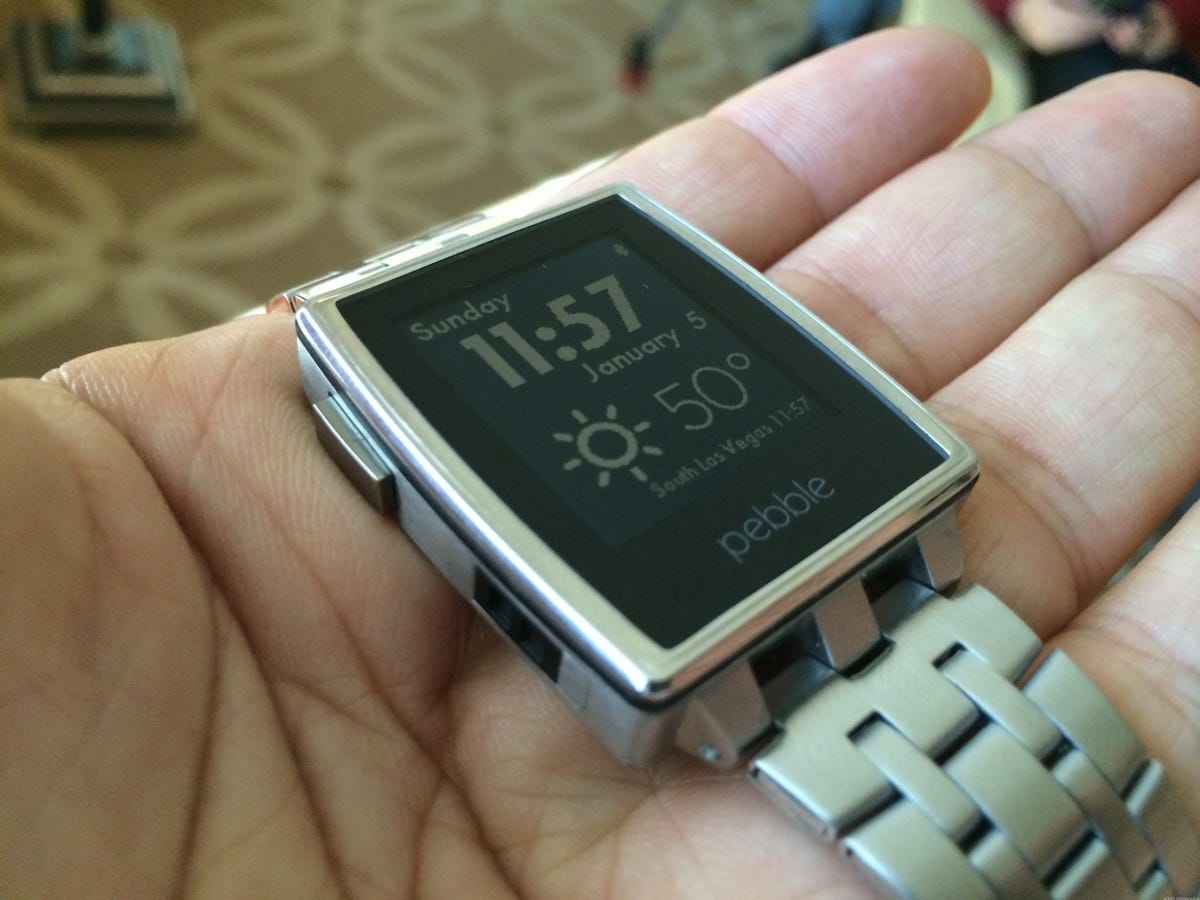When looking at the plethora of wearable devices unveiled at the Consumer Electronics Show in Las Vegas, other companies certainly followed that principle. A walk around the show floor saw startups such as Martian and Pebble and major players such as LG and Sony introduce new wearable gadgets. And in most cases, they offered either a single benefit, such as health tracking, or a handful of clearly defined features, such as notifications from a paired phone.
Compare that to Samsung’s Galaxy Gear, which is packed to the gills with features and is able to do a lot of things, even if it can’t do any of them particularly well. While the company likely won’t take a page from its rivals, it could stand to provide a simpler, more streamlined experience with Gear 2.
That the Gear comes busting with an impressive — and complicated — array of features underscores Samsung’s strong desire to shed its reputation as a “fast follower” and be seen in the industry as a pioneer in new areas of consumer electronics. While Samsung isn’t the first with a smartwatch, it was the first to put some major muscle behind it, and is seen as a potential driver of the overall wearable market.
Smartwatches to watch at CES 2014 (pictures)






+4 more
As such, it doesn’t have the luxury of launching a simple fitness tracker or notification device — it has loftier ambitions.
“While we could deliver something like a fitness band, what that doesn’t do is set us up for the next wave of innovation,” Ryan Bidan, director of product marketing for Samsung’s mobile business in the US, told CNET at CES. “It takes something like Gear where people can start to experience other things and new use cases and start to understand how they can better integrate this technology.”
While Samsung is off breaking new ground, the money is being made in those simpler areas, particularly in health. Fitness and health trackers are leading the wearables category, according to Accenture, with about 90 percent of wearables purchased today related to those areas. That’s largely because they address a clear and defined need, according to the consultancy.
“Fitness bracelets are becoming, if not ubiquitous, certainly commonplace,” said David Sovie, a consultant with Accenture’s communications, media, and technology group.
Related stories:
- Wearable tech at CES 2014: Many, many small steps
- Behind Samsung’s push to rule the world
- How Samsung cranked out the Galaxy Gear: The inside story
- Pebble Steel declassified: Raising the smartwatch design bar without breaking the mold
- CNET’s take on the Galaxy Gear
- What Samsung needs to do to make Galaxy Gear a hit in 2014
- Three things Samsung learned from Galaxy Gear version No. 1
That’s not to say they didn’t make waves at the show. Pebble, for instance, debuted the more fashion-forward metal Pebble Steel, while the Martian Notifier delivers alerts in a system that looks like a traditional timepiece. LG introduced the Lifeband Touch, a fitness tracker with more smarts than rivals in the category. The device not only measures health factors but also provides phone notifications and two-way phone controls.
Samsung, meanwhile, is known for throwing buzzworthy — though sometimes unnecessary — features into products, and simple has never quite been its forte. Take the Galaxy S4. That smartphone shipped with eye tracking and scrolling and various other features that didn’t work as well as anticipated. As I noted at CES last year, Samsung is trying to cure its featuritis, but it still has a long way to go.
Gear also hasn’t received the warmest reception. Tech reviewers, including CNET, have criticized Gear for its high price tag, weak battery life, wonky voice command feature, and limited compatibility with other devices.
And it’s unclear how well Gear has sold. Samsung said it shipped 800,000 Gears to retail partners in the first two months the device was on the market, but no one is saying how many have actually been purchased by consumers. The belief is that return rates are high, though Bidan disputed that fact, saying returns haven’t been higher than for any other mobile devices. He declined to provide sales data.


Scott Stein/CNET
In wearables, Samsung may find it sells a lot more devices if it narrows its focus, but it also needs to find a way to make Gear less obtrusive and more like a piece of jewelry. People aren’t exactly clamoring for smartphones strapped to their wrists. The company knows this and no doubt will incorporate such insights into its future products.
And it’s not like Samsung is completely ignoring the simple, health-band market. The company at its Galaxy S4 launch last March unveiled the S Band, a fitness tracker similar to the Nike Fuelband. However, the device essentially disappeared, never reaching the US market. Instead Samsung in September announced its Galaxy Gear smartwatch that connects to a user’s smartphone or tablet to provide alerts, take photos, make calls, and access certain apps.
Bidan said the company will introduce products similar to the S Band in the future, and Dennis Miloseski, head of design studio at Samsung Design America, said his group has been prepping new products to coincide with the spring Galaxy S launch and the fall Galaxy Note release.
These are “entirely new types of products and categories themselves, things that really aren’t on the market today so there isn’t really a comparison to [them],” Miloseski said following a panel at CES called Samsung West. That could include some simpler devices, as well as products that don’t have to rely on smartphones for connectivity, he said.
“How can you stay connected and still engage in a conversation without turning into a cyborg?” Miloseski said. “How can we enable technology to recede?…We have the ability to make technology blend in with your life.”
That’s a noble goal for Samsung. Now it just needs to deliver.
Samsung Galaxy Gear smartwatch looks good, but doesn’t do enough (pictures)






+30 more



